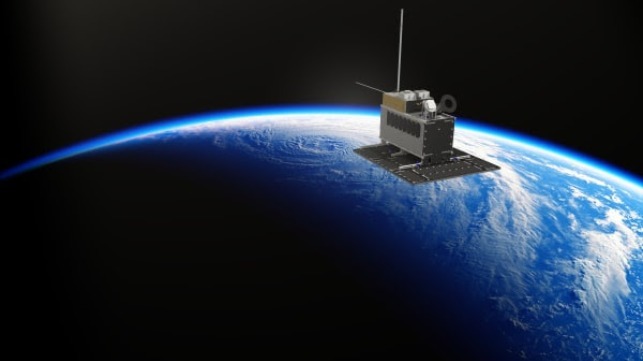
Published on May 27, 2021, 5:17 p.m.
Maritime Executive Director
KONGSBERG technology will play a key role in the life of a recently activated microsatellite. The Norwegian Space Agency’s new NorSat-3, launched on April 29, 2021 from a Vega FV 18 flight from the European Spaceport in Kourou, French Guiana, will be used by the Norwegian Coastal Administration to monitor maritime traffic on Norway’s busy sea lanes. . Its AIS and NRD payload (navigation radar detector) is based on KONGSBERG’s state-of-the-art spacecraft discovery.
NorSat-3 will take its place 605 km above the Earth in the polar constellation LEO (Low Earth Orbit) along with four other microsatellites. They have been in operation for years and have all exceeded their working lives, but they are still working efficiently. The new 16.5 kg satellite is designed to provide next-level functionality, so it is equipped with KONGSBERG’s ASR x50 SAT-AIS receiver as its main payload – the advanced result of the fourth generation of AIS history (automatic identification system) which stretches backwards for two decades.
The ASR x50 sets a new standard for sensitivity in space-based SAT-AIS receivers, with the ability to detect even AIS Class B vessels. Extremely reliable and offering built-in redundancy, it uses next-generation collision algorithms for optimal vessel detection in areas with medium or high traffic density. Its miniature, best-in-class EEE (electrical, electronic and electromechanical) components have been selected for their principles of radiation resistance and low energy consumption.
In addition, its significant data storage is combined with multi-antenna support, superb dynamic range and pre-configurable, in-orbit SDR (Software-Defined Radio) technology, ensuring compatibility with upcoming algorithm improvements or changes to AIS / VDES standards. As part of KONGSBERG’s new series of extended life cycles, the ASR x50 has been designed for low-Earth life for more than seven years.
Meanwhile, the secondary payload of the new microsatellite consists of an experimental antenna and a NRD receiver (Navigation Radar Detector) supplied by the Norwegian Defense Research Agency (FFI) and developed in collaboration with KONGSBERG, the French space agency CNES and the German electronics company ILFA. This advanced equipment can detect and locate signals transmitted by civilian radar navigation systems, which will give the Norwegian Coastal Administration a more complete situational picture by including ships that do not send AIS signals for reasons ranging from errors and malfunctions to transponders. which are off.
“The launch of NorSat-3 represents a significant step forward in terms of the quality and quantity of data we can receive, evaluate and share with other government organizations,” said Arve Dimen, Director of Navigation Technology and Maritime Services, Norwegian Coastal Administration. “The benefits of safer, better-informed navigation in Norwegian waters, both now and in the future, are obvious, and for KONGSBERG’s credit, the company’s technology must be so important in achieving our goals.”
“Raising situational awareness for both seafarers and vessel controllers provides great benefits, and NorSat-3 is an excellent example of how microsatellites make a decisive contribution to this picture,” added Erland Wagsholm, vice president of research and development, Kongsberg Seatex. . “This also shows how KONGSBERG’s strong focus on microsatellite solutions is well adapted to Norway’s needs for monitoring large ocean areas and maritime safety in general.”
The products and services described in this press release are not endorsed by The Maritime Executive.
